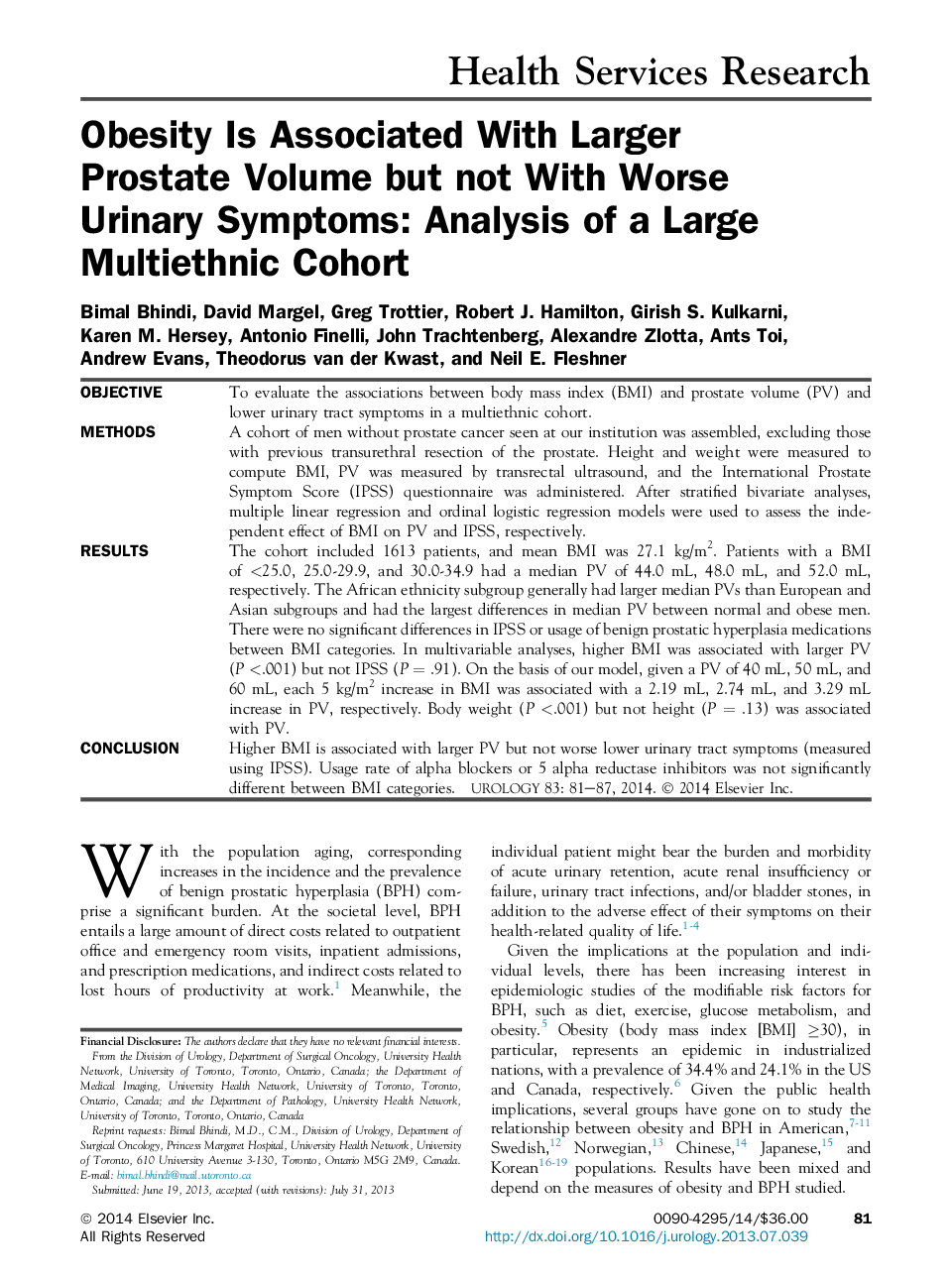| Article ID | Journal | Published Year | Pages | File Type |
|---|---|---|---|---|
| 3898887 | Urology | 2014 | 7 Pages |
ObjectiveTo evaluate the associations between body mass index (BMI) and prostate volume (PV) and lower urinary tract symptoms in a multiethnic cohort.MethodsA cohort of men without prostate cancer seen at our institution was assembled, excluding those with previous transurethral resection of the prostate. Height and weight were measured to compute BMI, PV was measured by transrectal ultrasound, and the International Prostate Symptom Score (IPSS) questionnaire was administered. After stratified bivariate analyses, multiple linear regression and ordinal logistic regression models were used to assess the independent effect of BMI on PV and IPSS, respectively.ResultsThe cohort included 1613 patients, and mean BMI was 27.1 kg/m2. Patients with a BMI of <25.0, 25.0-29.9, and 30.0-34.9 had a median PV of 44.0 mL, 48.0 mL, and 52.0 mL, respectively. The African ethnicity subgroup generally had larger median PVs than European and Asian subgroups and had the largest differences in median PV between normal and obese men. There were no significant differences in IPSS or usage of benign prostatic hyperplasia medications between BMI categories. In multivariable analyses, higher BMI was associated with larger PV (P <.001) but not IPSS (P = .91). On the basis of our model, given a PV of 40 mL, 50 mL, and 60 mL, each 5 kg/m2 increase in BMI was associated with a 2.19 mL, 2.74 mL, and 3.29 mL increase in PV, respectively. Body weight (P <.001) but not height (P = .13) was associated with PV.ConclusionHigher BMI is associated with larger PV but not worse lower urinary tract symptoms (measured using IPSS). Usage rate of alpha blockers or 5 alpha reductase inhibitors was not significantly different between BMI categories.
